New job reports were just released! Here’s our labor market insights for June 2024.
Key Takeaways:
Recent labor market data/trends can be described in two words: cool and rebalance. While recent data confirms a cooling labor market, it’s important to note that it’s a controlled descent (not at all surprising or too concerning). The real question is—where are we in the cooling process? Is winter coming, or is the downward trend in the rearview mirror?
At the risk of repeating myself, the reality of the labor market largely depends on the lens in which it’s viewed. There is danger in data—without context, it’s just noise. For instance, much of the strength of labor market expansion continues to depend on just three sectors who added 54% of net jobs so far in 2024: Government, Healthcare, and Leisure and Hospitality.
There is one demographic that is feeling the brunt of the cooling market—college graduates:
- The unemployment rate for recent college grads (ages 20 to 29) is above 12%, an almost four percentage point increase from a year ago.
- College grad hiring is forecasted to decline 6% from last year.
- Data suggests ~40% of recent college graduates are “underemployed” (including working in roles that don’t require a college degree).
- Several industries are planning to cut back on the number of new hires from the class of 2024; including computer and electronics manufacturers, with those businesses projecting a decline of about 12% in hires of new grads, while financial firms expect an almost 15% drop.
- More than 40% of college seniors said they planned to pursue freelance or gig work after walking across the stage, a recent survey by the job marketplace Handshake found. Almost a third expected to do so on top of a full-time role.
- A look at the job market for college graduates:
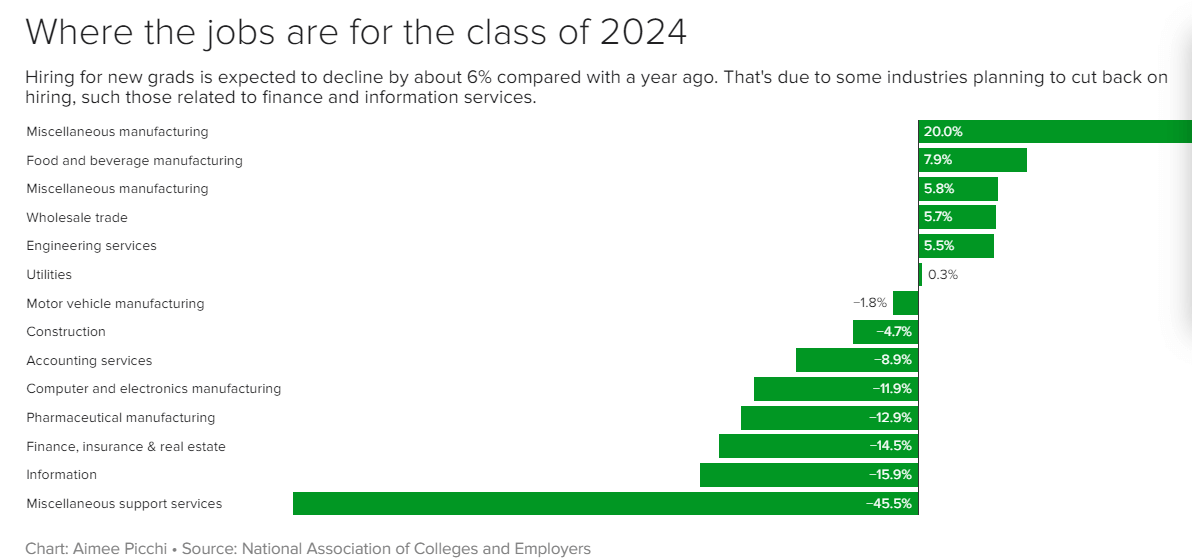
- Remember all the advice high school graduates received about getting a degree in Technology? Here’s a look at job postings for the seemingly recession proof software development/engineering profession:
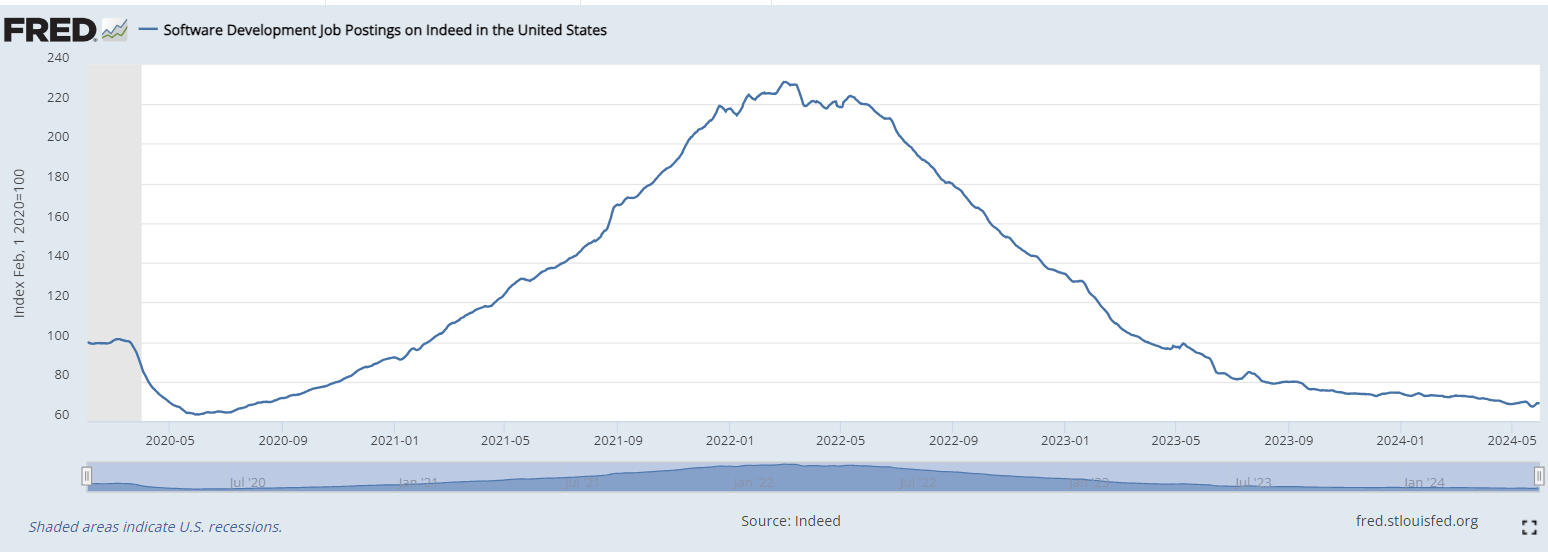
How can college grads differentiate themselves in the job market? Employers cited the skills college graduates lack the most are interpersonal skills, problem-solving skills, leadership, and written and oral communication. Interestingly, these soft skills are most needed across all demographics.
A review of the labor market data is below. The most notable data point this month is unemployment hitting 4%. Unemployment has now risen three straight months for the first time since the pandemic in 2020. While 4% is generally considered “low” unemployment, rising unemployment is typically a precursor to recession—so, this is something to keep an eye on.
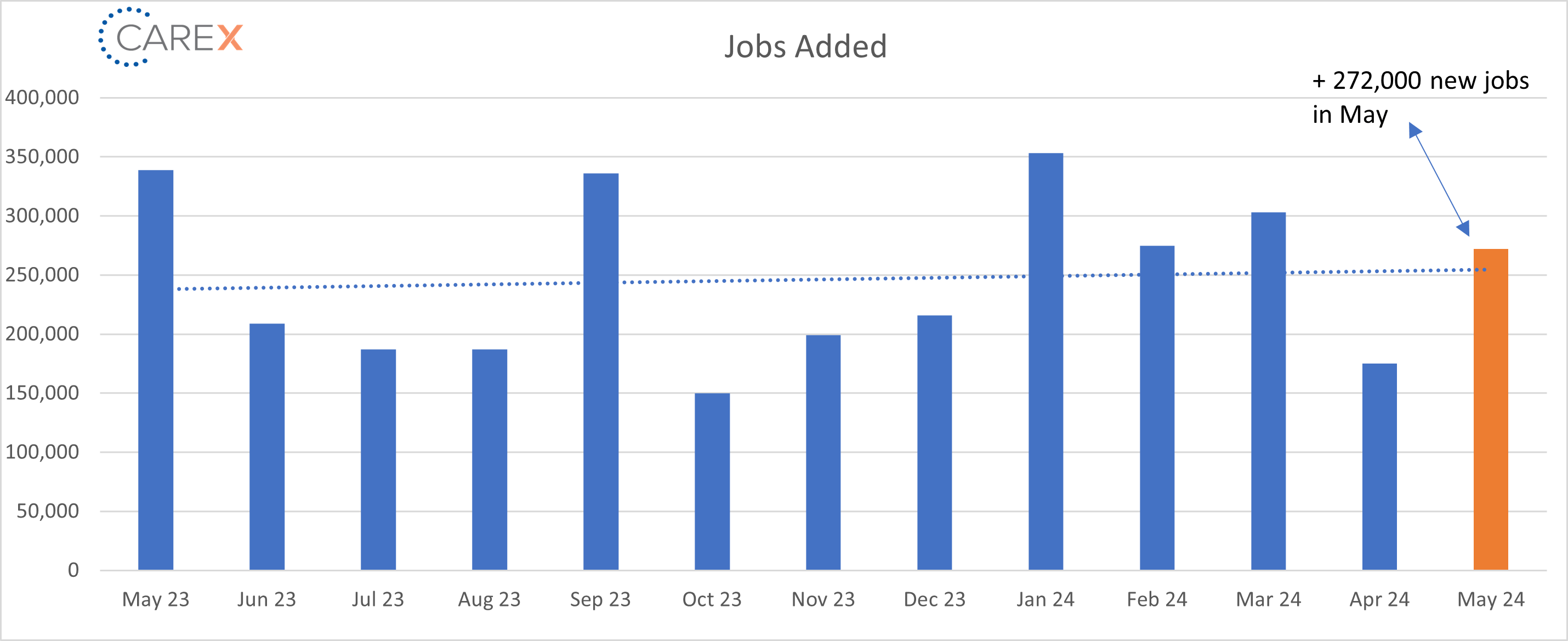
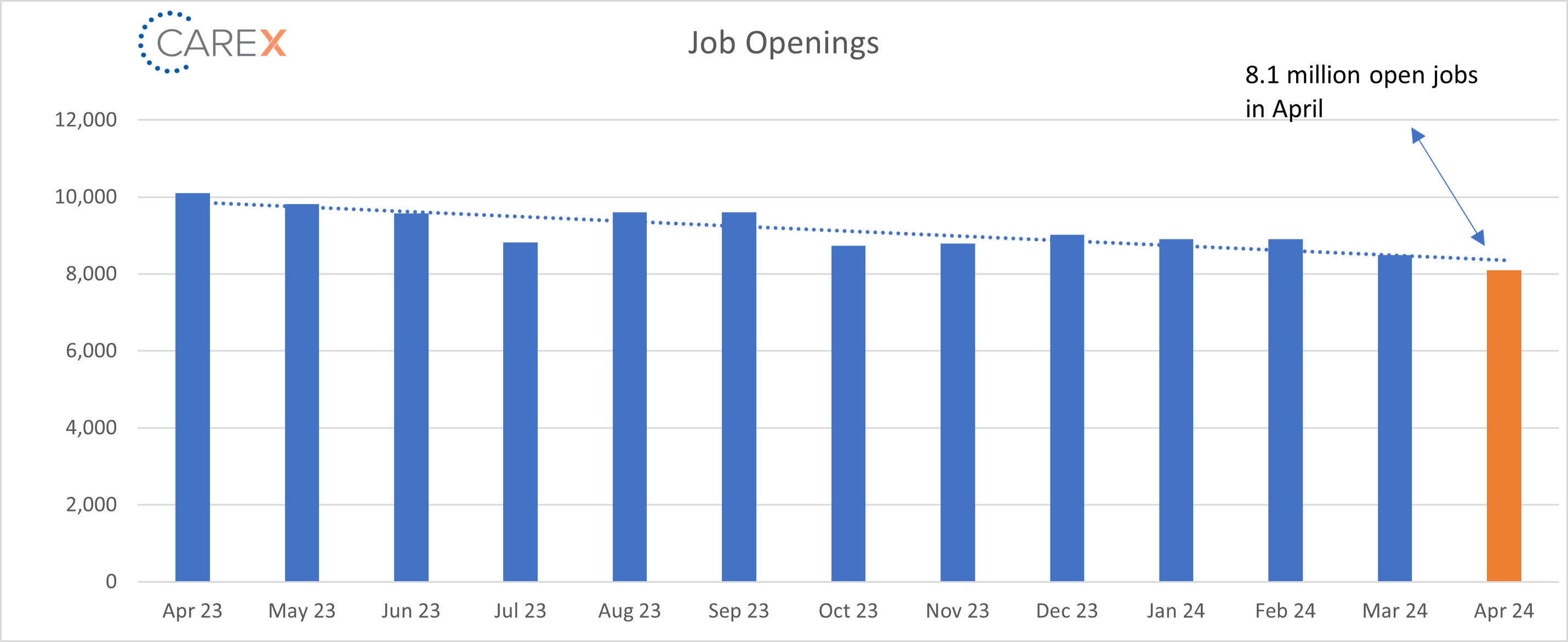
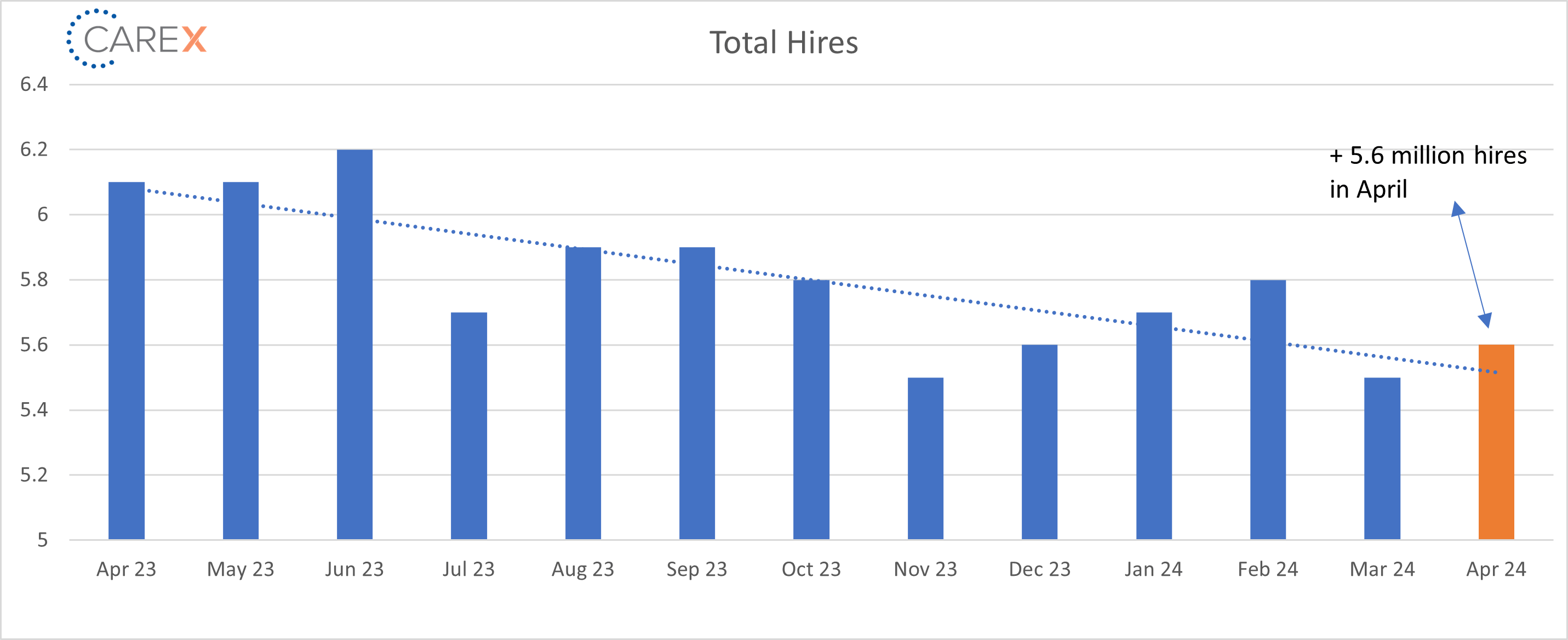
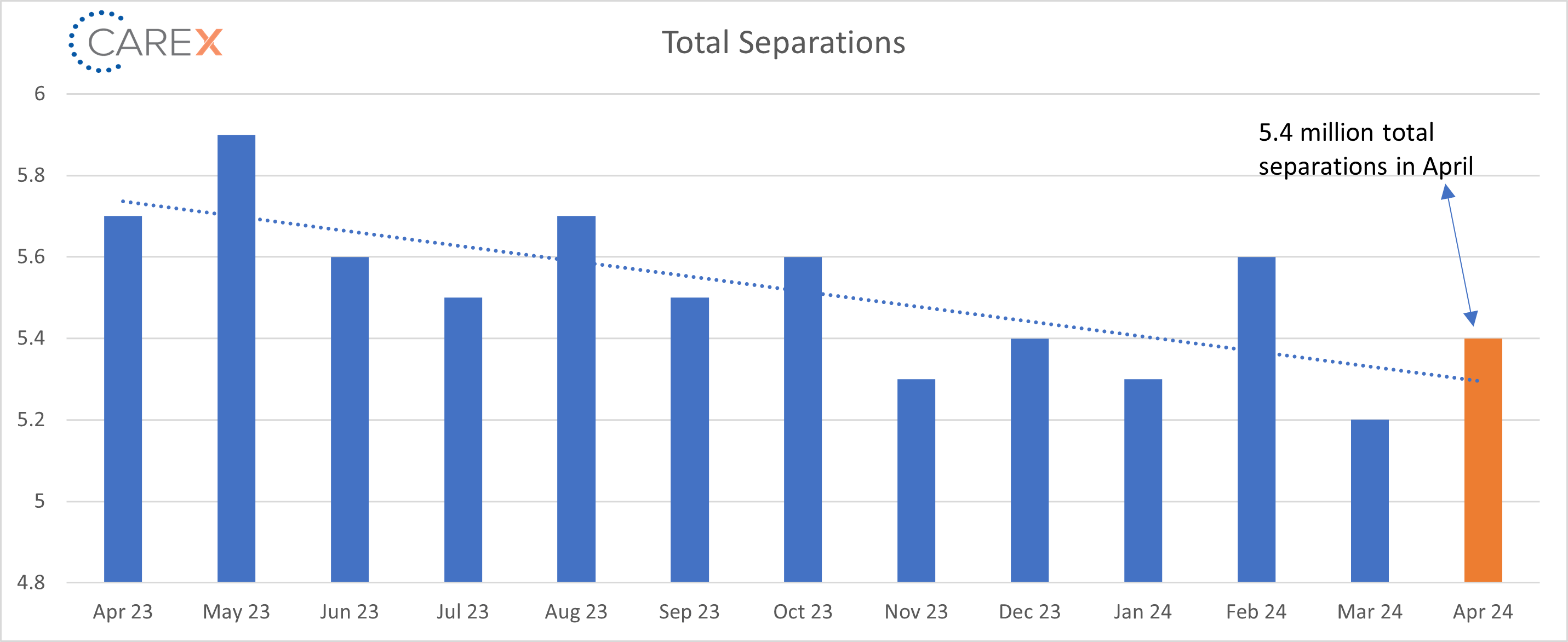
By the Numbers:
- New Jobs – The U.S. added 272,000 new jobs last month, far exceeding economists’ estimates of 180,000.
- Job gains were focused in health care, government, and leisure and hospitality.
- These three sectors have accounted for around two-thirds of all jobs created in the past year.
- Unemployment rose to 4%, up from 3.9% the previous month.
- The Fed anticipates (hopes) it’ll hit 4.1% by the end of the year.
- Job openings dropped slightly to 8.1 million, down from 8.5 million the previous month.
- The lowest rate since February 2021.
- Hires increased slightly to 5.6 million, up from 5.5 million the previous month.
- Down from 6.2 million this time last year.
- Layoffs remain unchanged at 1.5 million, down from 1.7 million two months ago.
- The layoff rate stayed at ~1% for the 8th consecutive month.
- The number of layoffs remains very low by historical standards.
- Quits increased slightly to 3.5 million, up from 3.3 million the previous month.
- Quits, which are seen as a measure of worker confidence in the ability to change jobs and find another one continues to remain very steady (and very low).
- Total separations increased to 5.4 million, up slightly from 5.2 million the previous month.
- Separations have stabilized across all industries, notably the tech sector.
- Jobs per available worker dropped slightly to 1.2:1, a slight increase from 1.3:1 last month.
- Noticeably down from 1.8:1 last summer.
- This ratio averaged ~2:1 over the past 2 years.
- Labor Force Participation Rate (LFPR) dropped to 62.5%, down from 62.7% the two previous months.
- It hit a high of 67.3% in early 2000 and fell to 63.3% in the month before the onset of the pandemic.
To make sure you never miss a Labor Market Insights update, you can subscribe to receive reminders via email here! While you’re here, make sure to check out the other resources we have available.

